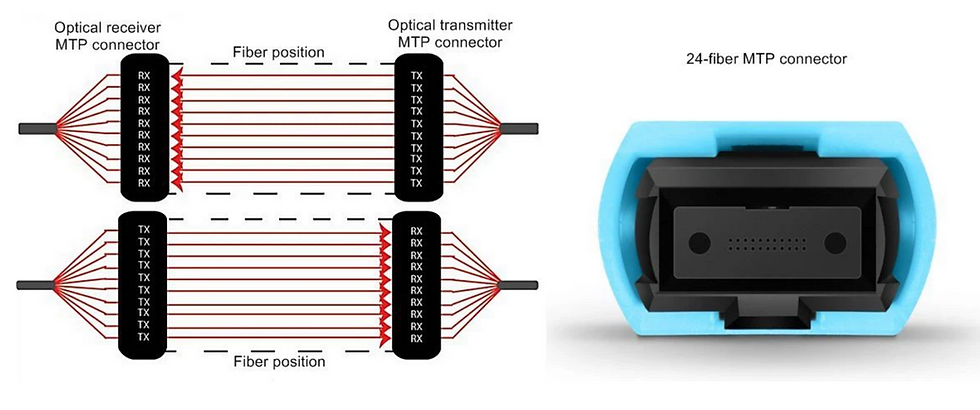What Are Heterogeneous Multi-Core Fibers (Hetero-MCFs)?
- Nguyen Tran Tien
- Nov 26, 2024
- 1 min read
Heterogeneous Multi-Core Fibers (Hetero-MCFs) are a type of multi-core fiber (MCF) where each optical core within the fiber has distinct properties, differing from the homogeneous MCFs, which have identical core designs and characteristics.

Sample Hetero-MCF Core arrange
Key Features of Hetero-MCFs:
Diverse Core Characteristics:
The cores in a Hetero-MCF may vary in terms of:
Refractive index profiles.
Dispersion properties.
Core diameters.
This enables the optimization of each core for specific applications or wavelengths.
Advantages:
Reduced Inter-Core Crosstalk: The variation in core design mitigates signal interference between cores, enhancing transmission quality.
Application Flexibility: Different cores can be tailored for distinct functionalities, such as handling quantum signals in one core and classical signals in another.
Improved Spatial Efficiency: Hetero-MCFs make better use of spatial resources, meeting the demands for higher bandwidth in modern networks.
Applications:
Mixed data transmission, combining quantum and classical communication channels.
Advanced telecommunication networks and next-generation Internet infrastructure.
Access networks, especially in Passive Optical Networks (PONs).
Challenges:
More complex design and manufacturing processes compared to homogeneous MCFs.
Requires advanced fabrication techniques to ensure precise control over the core structures and minimize production errors.



Comments